
Review on 🔌 gofanco 4K HDMI Male to DisplayPort Female Converter Adapter with USB Power for HDMI Source to DisplayPort Monitor (Unidirectional), Compliant with VESA Dual-Mode DisplayPort 1.2, HDMI 1.4 by William Bell

Tested at 1080p, 120Hz and 1440p, 60Hz and latency tests
(EDIT: Revain have now merged multiple product reviews. Just to clarify, this review is about a ≈$35 adapter that will charge up to 4K supports 30Hz. This rating does NOT apply to the 4K 60Hz adapter.) This is an HDMI to DisplayPort adapter. It is used to connect the HDMI output (graphics card, laptop, etc.) to the DisplayPort input of the monitor. It does not connect a DisplayPort output to an HDMI display. ========= This adapter supports TMDS clock speeds up to ≈300MHz, which is slightly below the maximum allowed for HDMI 1.4. The 300MHz TMDS clock provides approximately 9.0 Gbps throughput (7.2 Gbps data rate). This bit rate is sufficient to support: • 1920 × 1080 at 120 Hz • 2560 × 1440 at 60 Hz • 3840 × 2160 at 30 Hz at 8 bits per channel (24 bits/pixel) of RGB or YCbCr 4:4: 4 color . 1080p 120Hz and 1440p 60Hz adapter and can confirm it works for both formats. (Radeon RX 480) and an NVIDIA card (GeForce GTX 1080) and ran in all four combinations with up to 120 Hz. 144 Hz didn't work; That was somewhat expected since the adapter only claims to have support up to 120Hz anyway, but I just wanted to check. I have verified that 120Hz works correctly for all four combinations with a high speed camera with no dropped frames. The adapter was also tested at 2560 x 1440 @ 60Hz with a Dell UP2516D. Again, it worked fine, but it should be noted that the adapter does not support 10 bits per channel (30 bits/pixel) color; only 8 bit/channel option was available.================== OTHER FEATURES================== Embedded audio . The adapter does NOT support AMD FreeSync. The adapter claims to support dual-mode DisplayPort (which means it supports passive DisplayPort to DVI/HDMI adapters), so I thought I'd check it out just to make sure it's true. , and it actually works with both passive DP-DVI and DP-HDMI adapters. Apparently it supports the updated dual-mode specification, as I tested it with a Type 2 passive DP-HDMI adapter and ran full 1080p 120Hz resolution through both adapters myself. I don't know why you would want to convert your HDMI to DP and then back to HDMI instead of just using an end-to-end HDMI cable, but I think if you have that. ======= POWER ======= The Revain image shows "USB 3.0 for power"; Since USB 3.0 has a higher maximum power (900mA at 5V compared to 500mA of USB 2.0) I assumed the adapter would need more current. However, believe it or not, the adapter only draws about 40-50mA when operating, at least according to my USB power meter. =========WARNING========= The adapter can be finicky at times, and when hot-plugging the adapter between different graphics cards and monitors, you sometimes have to unplug and plug it back in multiple times to get a to establish connection. Please note that it may take a few seconds for the image to appear on the monitor, so give it a few seconds delay after each re-enable; Short answer: No, the adapter doesn't add any latency to worry about. I measured this with a custom device I built using a disassembled USB mouse and an oscilloscope. I measure the time delay between pressing the left mouse button and a light appearing on screen (in this case my CS:GO gun's muzzle flash), determined by a light-to-voltage converter. The whole chain of delay from a mouse click to the system, to the game engine, to the display unit, the actual delay count is not important here, but the difference between the delay when using a direct DisplayPort cable and adding an adapter in between you. Any delay added by the adapter should be seen as an increase when the adapter is not in use. 0 to 8.333 ms is added after each mouse input depending on how the click timing matched when the screen was updated. To mitigate this somewhat, I selected the smallest latency measurement from a sample of 50 measurements for each configuration. I measured a minimum of 43.8 ms (average 55.8 ms) with a direct DisplayPort connection and at least 45.2 ms (average 58.7 ms) with an adapter. Given the 8.333 ms error, I concluded that the adapter's latency is negligible.
- Nice to use
- alt
New products
Comments (0)
Top products in 📡 Satellite Television

High Performance Extreme Broadband Manufacturing BDA103HB 3-Way Balanced HD Digital Coax Cable Splitter, 1GHz

11 Review
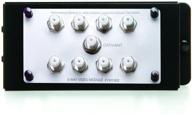
Legrand OnQ VM1002 1x8 Enhanced Passive Video Splitter for Optimal 1GHz Performance

12 Review
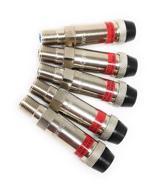
MoCA Filter 5-Pack for Optimal Cable TV & OTA Coaxial Network Performance

11 Review
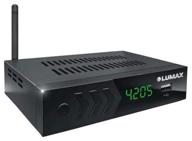
TV tuner LUMAX DV-4205HD black

46 Review
Another interesting products

Germany France Travel Power Adapter,TESSAN Schuko Plug With 2 USB Ports 2 AC Outlets, US To European Europe German French Spain Iceland Norway Russia Korea Adaptor(Type E/F)

17 Review
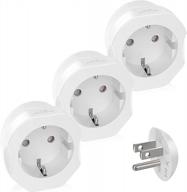
VINTAR EU To US Plug Adapter 3-Pack For Easy Travel: Europe To USA Converter For Spain, France, And More, Compatible With Type C/E/F Plugs - European To US Power Adapter Solution

11 Review
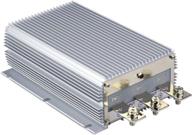
DC/DC 12V To 24V Boost Converter 40A 960W - Waterproof Voltage Regulator Module For Car Power Supply (10V-16V Input)

15 Review
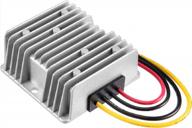
Kohree 36V To 12V DC/DC Converter Regulator - 10A 120W Golf Cart Voltage Reducer

17 Review

